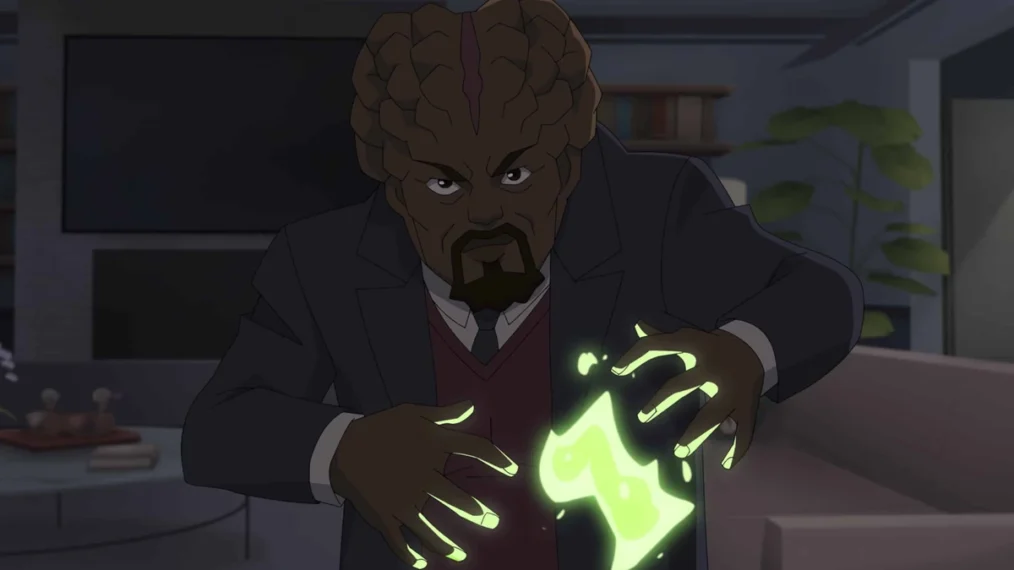Descent into Darkness: An Introduction
In the ever-evolving landscape of cinema where thrillers often lean towards the external stakes, “DARK NIGHT OF THE SOUL” takes a refreshing detour into the introspective. Set to premiere on Amazon Prime in November 2024, this drama-mystery helmed by writer-director S.J. Creazzo, dives deep into the psyche of Dr. Alex Waldan, portrayed by the dynamic Kristanna Loken. Alex, a scientist at the CDC, finds herself not just battling against time to develop a cure for an impending global viral crisis but also against her own past when a car crash leaves her physically trapped and mentally adrift.
This film isn’t just about survival in the literal sense; it’s a profound exploration of what it means to confront one’s inner demons when the world outside is crumbling. As Alex struggles in isolation, her memories become her companions, her adversaries, and her guides. “Dark Night of the Soul” invites viewers into a narrative where the external catastrophe serves as a backdrop to an even more pressing internal conflict, promising a story that’s as much about saving oneself as it is about saving humanity. This review will delve into how well the film navigates these dual narratives, offering insights for viewers considering whether to embark on this journey with Alex.
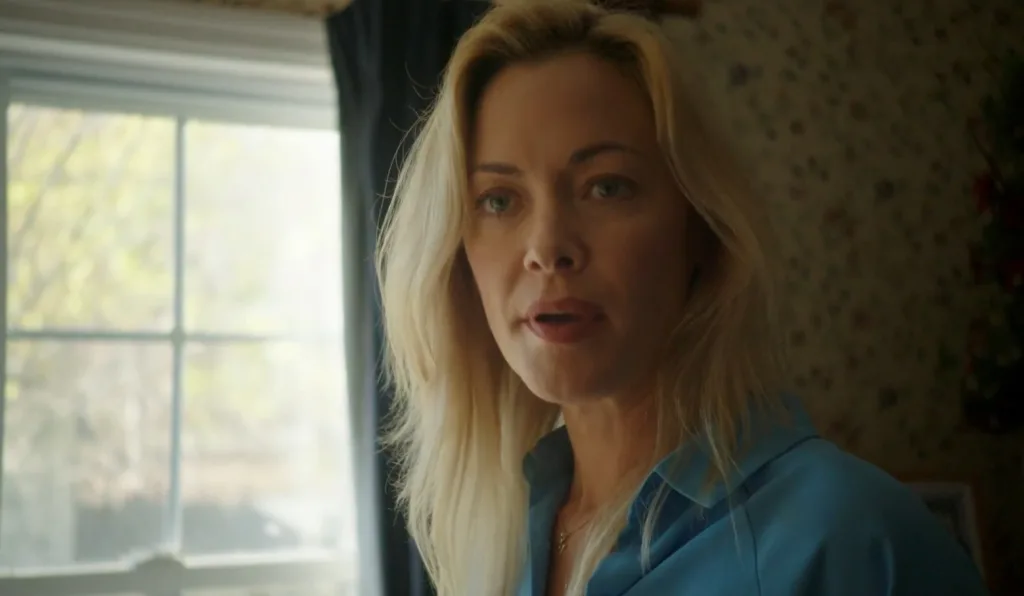

The Plot Thickens: A Synopsis
The narrative of “Dark Night of the Soul” orbits around Dr. Alex Waldan, a dedicated CDC scientist tasked with the monumental responsibility of finding a cure for a deadly virus sweeping across the globe. However, her life takes a dramatic turn when, amidst reviewing crucial data and listening to a talk radio show, she suffers a catastrophic car accident in the secluded Catskill Mountains.
Trapped inside her vehicle, with no cell service to call for help, Alex’s situation is dire. Yet, this physical entrapment becomes the catalyst for an unexpected journey inward. As she struggles to free herself, her mind drifts into the past through vivid memories, each flashback peeling back layers of her life. These memories are not just idle reflections; they are confrontations with her past, particularly with her estranged father, played by Martin Kove, revealing the complex dynamics of familial relationships, the quest for approval, and the shadows of unresolved issues.
The plot weaves these personal revelations with the overarching urgency of her mission. Alex’s predicament is both a literal and metaphorical representation of being stuck — caught between life and death, past and present, personal and global crises. This dual struggle forms the backbone of the film, as Alex’s journey for survival is as much about escaping the wreckage as it is about escaping the confines of her own emotional and psychological barriers.
The Cast: Portraits of Torment
Kristanna Loken as Dr. Alex Waldan:
- Kristanna Loken delivers a compelling performance as Dr. Alex Waldan, capturing the essence of a woman thrust into both physical and emotional turmoil. Her portrayal of Alex is both intense and nuanced, with moments of vulnerability that underscore her character’s humanity amidst the crisis. While Loken effectively conveys the desperation and determination of Alex’s situation, there are instances where the depth of her character’s internal struggle might have been explored further. Her struggle with her past, particularly her relationship with her father, is well portrayed, though at times the emotional depth seems somewhat on the surface compared to the physical survival elements.
Martin Kove as the Estranged Father:
- Martin Kove brings a layered complexity to the role of Alex’s father. His performance adds significant emotional weight to the film, providing a counterpoint to Alex’s intensity with a calm, reflective demeanor. Kove’s ability to convey regret, understanding, and a subtle undercurrent of his character’s own unresolved issues enriches the narrative. His interactions with Loken through flashbacks are some of the film’s strongest moments, although the chemistry could have been deepened to further enhance the father-daughter dynamic.
Supporting Cast:
- The supporting cast, including Jesse Kove, Paola Paulin, Tom Malloy, Courtney Warner, Sophia VanDette, and Gabrielle Kalomiris, contribute effectively to the film’s atmosphere. Each actor brings a distinct flavor to their role, whether it’s providing insight into Alex’s past or reflecting the world’s response to the crisis she’s dealing with. However, some characters feel underdeveloped, serving more as catalysts for Alex’s reflections rather than fully realized individuals with their own arcs.
The performances in “Dark Night of the Soul” are generally strong, with Loken and Martin Kove standing out for their ability to convey complex emotions. While the film benefits from these performances, it occasionally falls short in fully exploring the psychological depths of its characters, which could have provided a richer viewing experience.
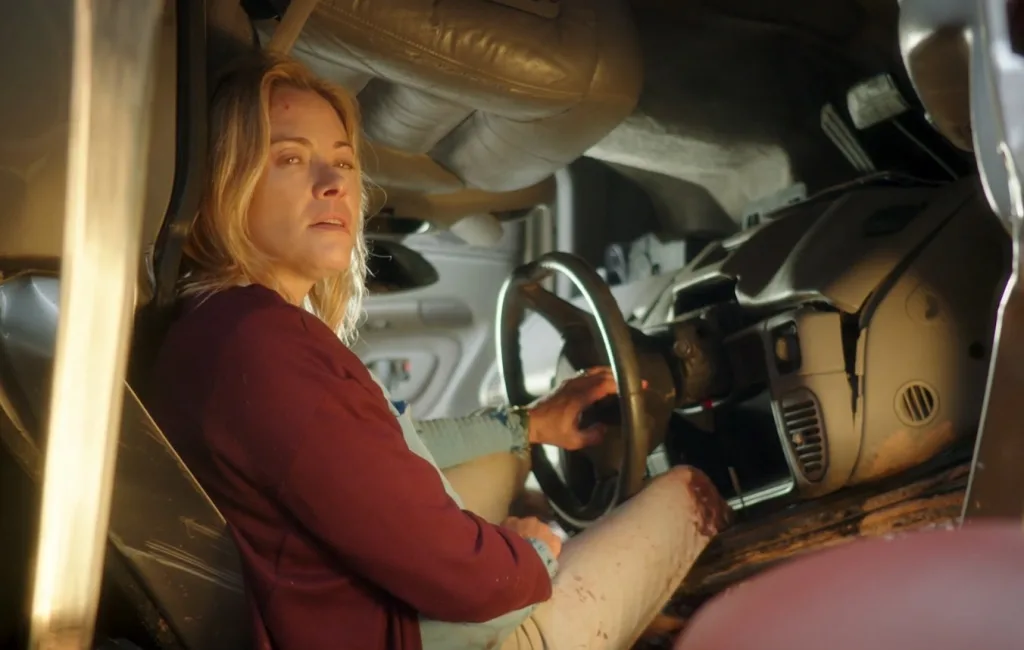

Crafting Fear: Cinematic Techniques
Direction and Writing:
- S.J. Creazzo’s dual role as director and writer in “Dark Night of the Soul” showcases a vision that attempts to merge the intensity of a survival thriller with the depth of character study. The direction leans heavily into the emotional narrative, with pacing that sometimes feels reflective, aiming to give space for the character’s internal journey. However, there are moments where this pacing could be critiqued for not maintaining a consistent tension, potentially detracting from the urgency of Alex’s physical predicament. The writing provides a solid foundation for character exploration, but dialogue occasionally lacks the punch needed to fully convey the depth of the emotional stakes.
Visuals and Setting:
- The film utilizes the stark beauty and isolation of its setting to amplify the narrative’s themes of solitude and self-confrontation. The choice of location in the Catskill Mountains, with its vivid autumnal palette, contrasts sharply with Alex’s dire situation, visually representing her internal conflict. The cinematography captures this juxtaposition well, though there are scenes where the visual storytelling might have benefited from more innovative camera work or a tighter focus to enhance the film’s atmospheric tension.
Sound Design and Score:
- The sound design plays a crucial role in building the film’s atmosphere, with the absence of modern technology’s sounds contributing to the sense of isolation. However, the score, while effective in moments, sometimes feels generic, missing opportunities to heighten the film’s emotional or suspenseful peaks.
Editing:
- Editing in “Dark Night of the Soul” works to blend the past with the present, using flashbacks as a tool to delve into Alex’s psyche. While these transitions are generally smooth, there are instances where the cuts between reality and memory could have been made more seamless or impactful, potentially smoothing out the narrative flow.
Visual Effects and Practical Effects:
- The film opts for practical effects to depict the aftermath of the car crash, giving a raw, tangible feel to Alex’s struggle for freedom. This choice supports the film’s gritty realism, though some viewers might find that the effects, while believable, could be more dynamic to enhance the visual storytelling.
In general, the cinematic techniques employed in “Dark Night of the Soul” are commendable for their attempt to deepen the narrative through visual and auditory cues, but they also highlight areas where the film could have pushed further for a more immersive experience.
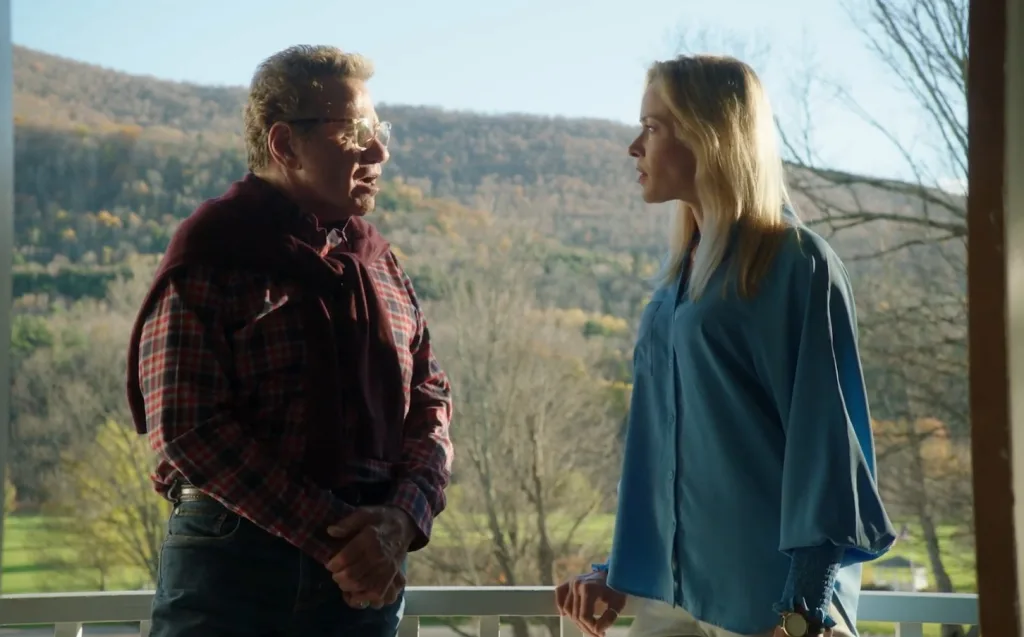

The Soul’s Labyrinth: Themes Explored
“Dark Night of the Soul” tackles several profound themes, weaving them into the fabric of its narrative to explore not just the external survival Alex faces but also her internal journey:
- Survival and Resilience:
- The film uses Alex’s physical struggle as a metaphor for life’s broader challenges. Her battle to escape the wreckage of her car parallels her efforts to break free from the emotional and psychological constraints of her past. This theme underscores the human capacity for resilience, portraying survival as both a physical and an existential endeavor.
- Family and Relationships:
- Central to the story is the complex relationship between Alex and her father, exploring themes of approval, understanding, and reconciliation. The film delves into how familial bonds influence personal identity and how unresolved issues can manifest in one’s life choices and self-perception. It suggests that healing often involves confronting these relationships, even in memory.
- Self-Discovery:
- Alex’s ordeal serves as a catalyst for introspection, forcing her to confront her life’s regrets, her sense of self, and what truly matters. The narrative highlights how adversity can lead to self-discovery, with Alex’s memories acting as both a guide and a mirror to her inner self, pushing her towards a deeper understanding of her desires, fears, and values.
- The Cost of Obsession:
- There’s an implicit critique of the obsession with work and scientific discovery, shown through Alex’s distraction leading to the accident. The film suggests that while dedication to one’s calling is noble, it can also blind one to life’s other priorities, like personal connections and self-care.
- Isolation vs. Connection:
- Set in a scenario of physical isolation, the movie contrasts this with moments of forced introspection and memories of past connections. It examines how isolation can either lead to self-destruction or serve as a ground for personal growth, depending on how one interacts with their inner and outer world.
- Time and Reflection:
- The film emphasizes the importance of time away from one’s immediate concerns to gain perspective. Alex’s predicament, while dire, inadvertently gives her the time to reflect, illustrating how moments of forced pause can be unexpectedly enlightening.
These themes are interwoven to create a narrative that isn’t just about escaping a physical trap but also about escaping the confines of one’s own mind, promoting a message that survival involves more than just physical endurance; it encompasses emotional and psychological growth.
Shadows and Light: Critique
Dark Night of the Soul Strengths:
- Character Depth: One of the film’s strongest aspects is its focus on character development, particularly with Dr. Alex Waldan. The introspective journey she undergoes, triggered by her life-threatening situation, provides a rich narrative that explores human resilience and the complexities of familial relationships. Kristanna Loken’s performance captures this internal struggle convincingly.
- Thematic Exploration: “Dark Night of the Soul” successfully delves into themes of survival, not just in the physical sense but emotionally and psychologically. The film uses Alex’s predicament as a metaphor for broader life challenges, making it resonate with viewers on a personal level.
- Atmospheric Setting: The isolated setting in the Catskills enhances the film’s atmosphere, providing a backdrop that visually represents Alex’s isolation and her internal conflict. The contrast between the vibrant autumn scenery and her dire circumstances adds depth to the survival narrative.
Dark Night of the Soul Weaknesses:
- Pacing Issues: The film occasionally falters in its pacing, with some scenes feeling dragged out, which can detract from the urgency of Alex’s situation. This uneven pacing might not fully capitalize on the tension that could have been built around her escape from the wreckage.
- Character Development: While the relationship between Alex and her father is explored, other supporting characters, including Alex’s sister, are not given the same depth. This can make some of the interactions feel less impactful or genuine.
- Missed Opportunities for Visual Storytelling: Although the film attempts to convey Alex’s memories through flashbacks, there are moments where these could have been more seamlessly integrated or visually striking, potentially enhancing the emotional impact of her reflections.
- Dialogue and Emotional Depth: At times, the dialogue lacks the emotional punch needed to fully engage the audience in Alex’s internal battles. While the performances are solid, the script could have used more nuanced exchanges to deepen the character’s emotional landscape.
- Technical Aspects: While the practical effects of the car crash and Alex’s injuries are well-executed, there might be a desire for more innovative or dynamic visual storytelling to elevate the film’s tension or to provide a more immersive experience during key moments of survival and introspection.
Overall, “Dark Night of the Soul” offers a thoughtful exploration of human endurance and personal growth, but it’s not without its flaws, particularly in maintaining narrative momentum and fully realizing its characters’ potential.
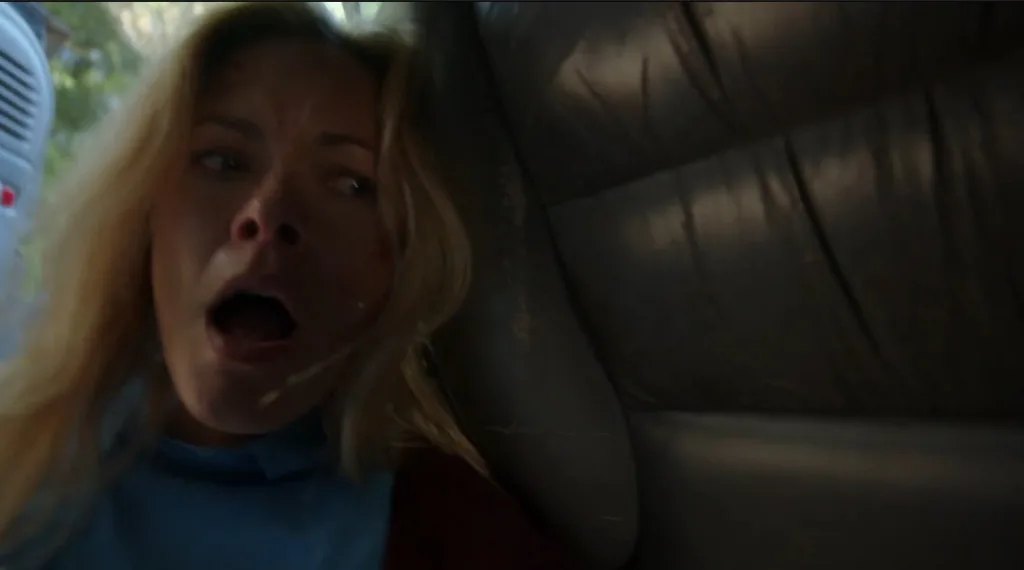

The Viewer’s Ordeal: Audience Experience
Who Might Enjoy This Film:
- “Dark Night of the Soul” would appeal particularly to viewers who enjoy character-driven narratives that delve into existential and emotional themes. Fans of survival dramas that aren’t solely focused on physical peril but also on psychological introspection will find it engaging. Those intrigued by stories about scientists or individuals facing global crises with personal stakes will be drawn to Alex’s story. Additionally, the film could resonate with anyone interested in exploring the complexities of familial bonds under stress.
Caveats:
- The film might not satisfy viewers looking for a fast-paced, action-packed thriller, given its slower, more reflective pacing in parts. Some might find the narrative focus on character introspection a bit heavy-handed or feel that the plot sometimes sacrifices suspense for thematic exploration.
- Audiences expecting a tightly woven story might be frustrated by the pacing issues or feel that the film leaves some character arcs underdeveloped. Those who prefer straightforward storytelling might also find the use of flashbacks and internal dialogue somewhat disjointed or less effective than desired.
This film is recommended for those who appreciate a blend of drama and mystery, with a focus on the human condition, resilience, and the search for personal truth amidst external chaos. However, viewers should come with an understanding that “Dark Night of the Soul” prioritizes emotional and psychological depth over conventional thriller elements, potentially requiring a more patient investment in its narrative style.
Emerging from the Abyss: Conclusion
“Dark Night of the Soul” is a film that ambitiously attempts to intertwine themes of survival with deep introspection. While it excels in creating a tense atmosphere through its premise of a scientist trapped in a car accident, facing both physical and emotional battles, there are elements where it falls short of its potential. Kristanna Loken delivers a strong performance, and the film’s focus on character development and emotional depth provides a compelling narrative framework. However, its pacing issues and the occasional underdevelopment of supporting characters can disrupt the viewing experience.
For those interested in psychological dramas with a twist of survival, this film offers a unique perspective, suggesting that true survival involves confronting one’s past as much as overcoming present obstacles. Yet, viewers looking for a relentless thrill might find the reflective pace less engaging. With a rating of 6.5 out of 10, “Dark Night of the Soul” is recommended for those who appreciate a narrative that prioritizes character exploration over action, providing a thought-provoking journey into the human psyche, albeit with room for improvement in its execution.





















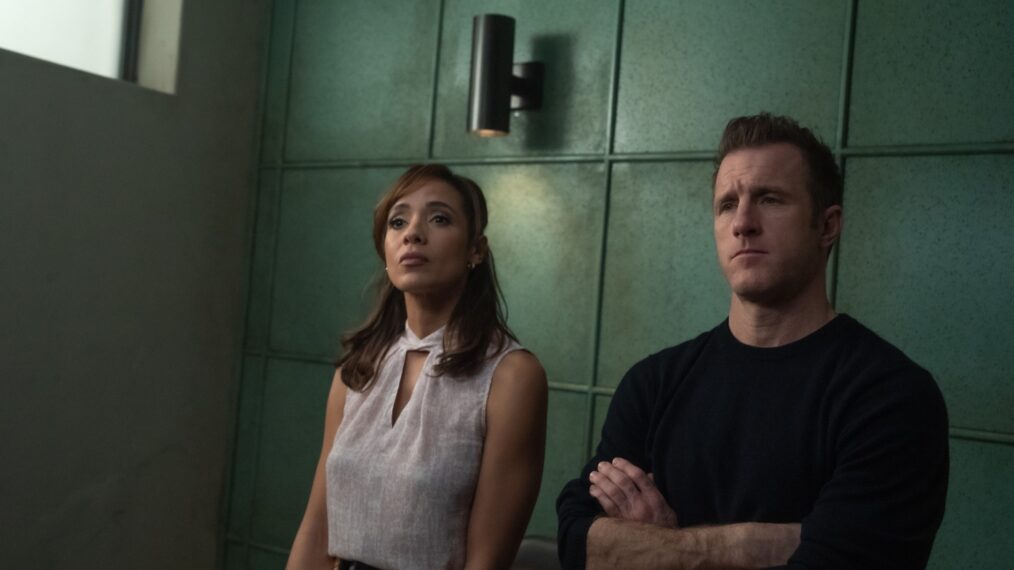









































![Dark Night of the Soul (2024) [REVIEW]. Dark Night of the Soul (2024) [REVIEW].](https://horrorfacts.com/wp-content/uploads/2024/11/DNOTS-1200x628-1-jpg.webp)
![Half a Century Later, Bob Clark’s ‘Black Christmas’ Is an American Pastime [Halloweenies Podcast] Half a Century Later, Bob Clark’s ‘Black Christmas’ Is an American Pastime [Halloweenies Podcast]](https://i0.wp.com/bloody-disgusting.com/wp-content/uploads/2024/11/guttergarbs-blackchristmas.jpg?resize=1000%2C600&ssl=1)












